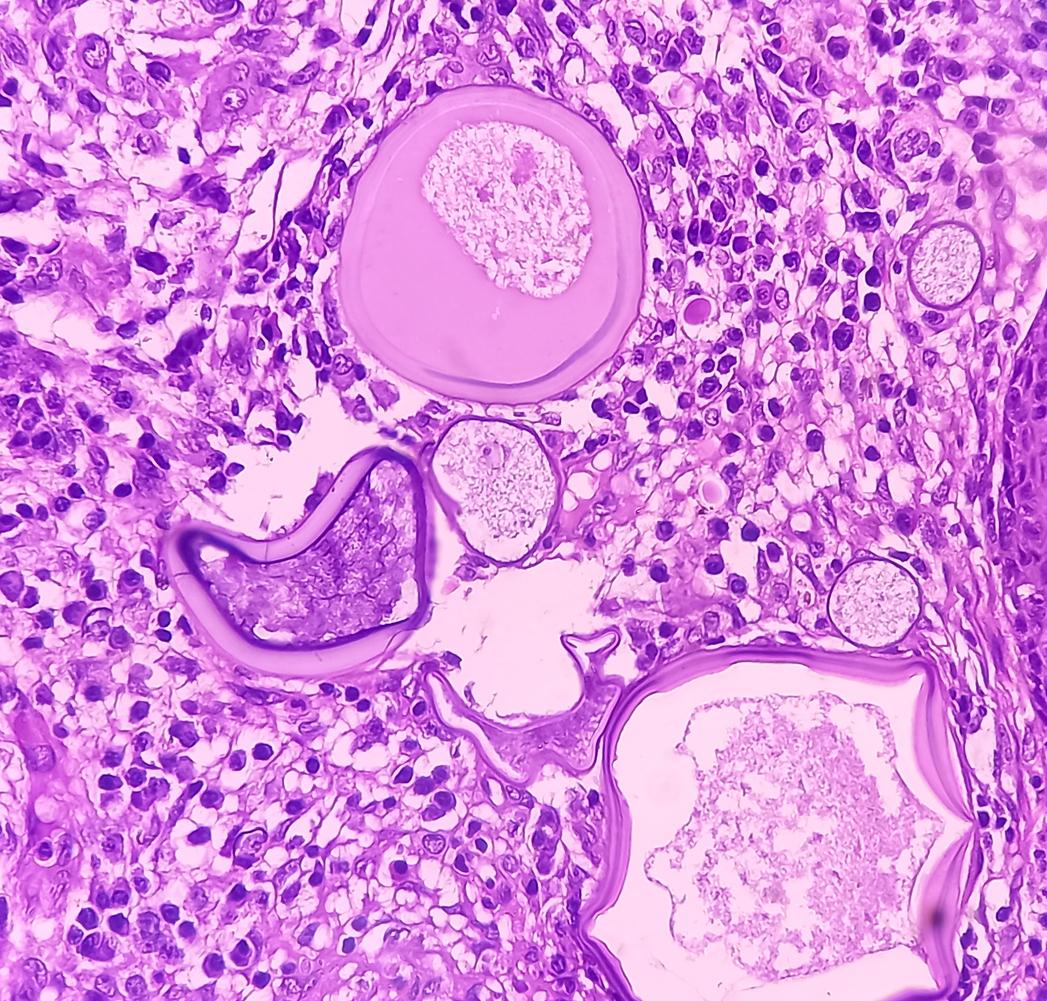A 63-year-old patient, infected with the bacterium Capnocytophaga canimorsus, died. He had been hospitalized following the appearance of small spots on his face. These had appeared after his dog had licked it.

- The scientific name for the appearance of small red and purplish spots on the face is facial petechiae.
- In the event of flu-like symptoms after contact with the saliva of his animal, the masters of dogs or cats must consult their doctor by stipulating this information.
Very many small red and purplish spots on the face and severe pain in the right leg and in the extremities… These are the symptoms which prompted a 63-year-old German to go to the hospital. He had never had a serious illness before, but for a few days he had been having difficulty breathing and flu-like symptoms.
A disturbing check-up
The case of this patient was reported in the journal European Journal of Case Reports in Internal Medicine. When he arrived at the hospital, doctors immediately gave him a full check-up. Result: fever (39 degrees), hypoxia (situation where the availability of oxygen is reduced), anemia (abnormal drop in the level of hemoglobin in the blood, a substance which allows oxygen to be transported to all body organs), thrombocytopenia (low blood platelet count) and kidney damage. This list worries the doctors, who decide to transfer him to an intensive care unit.
A purpura fulminans due to a bacterium…
After further analysis of the examinations, health professionals diagnose a purpura fulminans to the patient. This is the most severe form of sepsis, which is a blood infection usually caused by bacteria or sometimes a virus or fungus. This disease can be fatal… So, as soon as the doctors discovered the reason for his symptoms, they prescribed antibiotics to the 63-year-old man. But this support was not enough. Two days later, his liver and kidneys failed and he went into cardiac arrest, but doctors managed to resuscitate him.
…present in the saliva of dogs and cats
Finally, according to the analyses, the man would have been infected by a bacterium present in the saliva dogs and cats called Capnocytophaga canimorsus. A conclusion which does not shock the practitioners since the patient owned a dog who often licked his face. Armed with this information, they therefore adapt the treatment… But it is already too late, the bacteria has infected a large part of the patient’s body. Only ten days after his hospitalization, some of his extremities – his fingers and toes – become necrotic, turn black, his skin begins to rot, several of his organs no longer function and his fever rises to 41 degrees. Sixteen days after his arrival, the man dies.
A case never seen in the scientific literature
In the scientific literature, patients generally affected are immunocompromised, alcoholic or with part of the liver removed. None of these situations concerned the patient. Moreover, the infection is never due to the simple fact that the dog licks its master – as was the case for this 63-year-old man – but rather during a bite or contact between the saliva of the animal and the human wound. This is therefore an exceptional case.

















